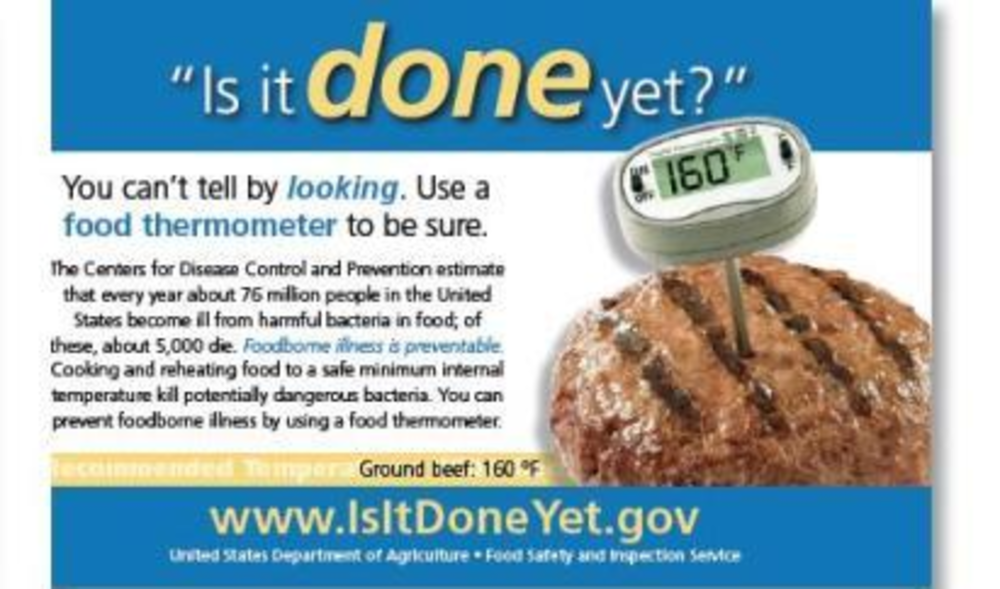Whether it’s a safety initiative, a healthy eating campaign or an effort to increase the amount of people tested for sexually transmitted diseases, government agencies face a variety of challenges when creating public awareness campaigns, including numerous levels of accountability, tiny budgets and cumbersome rules and regulations. In some cases, the health and welfare of the public is also highly dependent on a successful outcome.
“When you begin to work with government people on the client side, you learn just how passionately they care about the issues — and the limitations they have,” says Brian Herder, president and executive creative director of Russell Herder, a Minneapolis firm that specializes in government-to-public marketing for state and local government agencies. Herder says he enjoys doing work that makes a difference. “We’re working with people who have quite literally devoted their lives to these issues,” he says.
Using concepts familiar to commercial marketing has become more and more common in the world of government-to-public campaigns. Social marketing tactics — the application and adaptation of commercial marketing concepts to programs designed to change behavior for non-commercial reasons, whether it’s the individual or the public good — are a mainstay in today’s nonprofit organizations.
Acceptance among local, state, and federal government agencies has been gradual, but the use of social marketing to promote public programs is now on the rise, says Nedra Kline Weinreich, president of Los Angeles-based agency Weinreich Communications and author of the 1999 book Hands-On Social Marketing: A Step-by-Step Guide. Her firm’s clients include the Centers for Disease Control and Prevention (CDC), the Department of Energy, and the National Institute of Mental Health.
“Social marketing started out in the 1970s with international development programs like family planning and child survival issues,” says Weinreich. In the late ’80s and ’90s, she continues, it began to be used on a wider scale when the government discovered its effectiveness. “In the past five to 10 years, social marketing [by government] has really taken off,” she adds.
Within these campaigns, direct marketing is an increasingly important tool, says Alan Minton, VP at Alexandria, VA-based Track Marketing, a marketing firm that works exclusively with federal agencies such as the Environmental Protection Agency (EPA), the Social Security Administration, and the Department of Justice. For example, the Internet provides many opportunities for government agencies to implement social marketing campaigns.
“The tweens and young folks today are going to places like CDC’s store in Second Life, and to MySpace and Facebook, to learn about healthcare and personal hygiene. The public can sign up for e-mail news on safe drinking water — a huge issue in this country — through the EPA’s Web site,” says Minton.
Direct marketing is also rapidly growing in popularity among government agencies because of increasing accountability for measurable results. “It’s not enough to say ‘we put out 20,000 brochures’ anymore,” Minton adds. “The OMB [Office of Management and Budget] requires measurements, and agencies are forced to show real outcomes.”
As social marketers will attest, behavior changes don’t occur overnight. Still, other measures indicate success is within reach — and that the challenges of social marketing are worth the effort.
“You know what you do is going to make a real difference in someone’s life,” says Herder. “That’s what makes this work so rewarding.”
Campaigns
Minnesota Department of Health
Teen education campaign
Alarmed by the increase of sexually transmitted diseases (STDs) in Minnesota, the state’s Department of Health launched a multichannel campaign to educate teens age 15 to 19 about STDs and prevention, with a “Get tested” call to action. Teens were targeted at places where they likely hang out or socialize, and included transit and restroom advertising, radio spots, Web banners and online social media. Street teams also engaged target populations at key events.
CDC
Healthy eating campaign
The CDC’s new “Fruits & veggies — more matters” campaign builds on the momentum created by its highly successful “5 a day” program, which became a federal public-private partnership in 1991 after California’s 1988 pilot. The program promotes healthful eating and weight management to prevent cancer and other chronic diseases by increased consumption of fruits and vegetables. Public awareness of the program’s dietary recommendations has risen from 8% to 36% since 1991.
US Dept. of Agriculture
Food safety campaign
The USDA launched its “Is it done yet?” campaign to educate home cooks about the dangers of failing to cook food to a safe internal temperature. The effort urges the use of a food thermometer when preparing hamburger, pork, beef, veal, lamb, poultry and egg dishes. Piloted successfully in Michigan, the campaign is now nationwide and consists of print, radio, and television ads with print and online educational materials.








